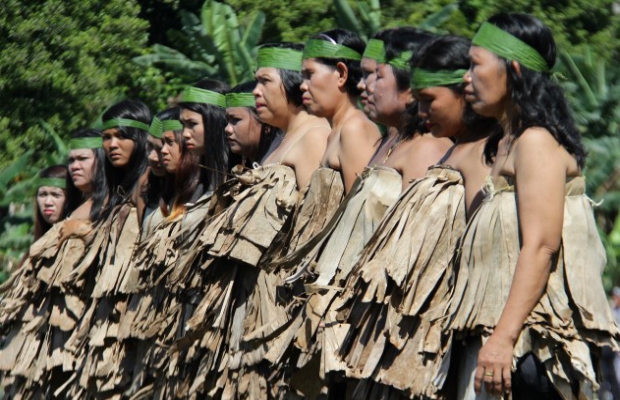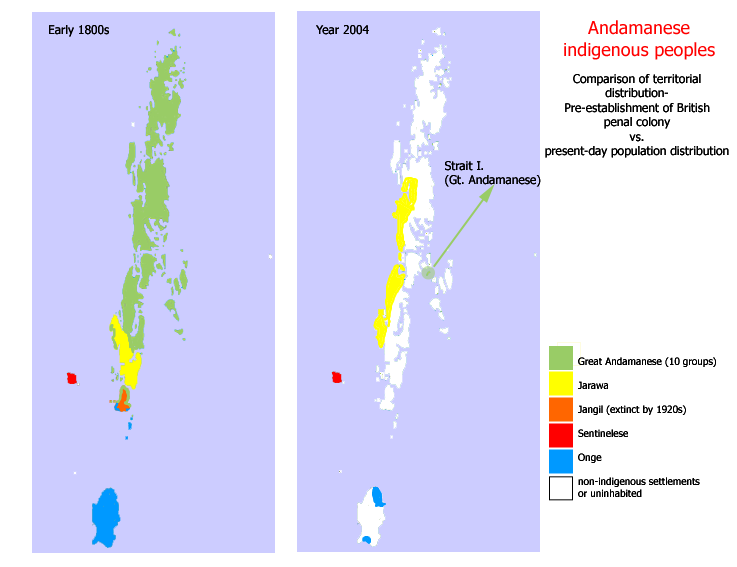|
Kenaboi Language
Kĕnaboi is an extinct unclassified language of Negeri Sembilan, Malay Peninsula, Malaysia that may be a language isolate or an Austroasiatic languages, Austroasiatic language belonging to the Aslian languages, Aslian branch. It is attested in what appears to be two dialects, based on word lists of about 250 lexical items, presumably collected around 1870–90. Background In Walter William Skeat (anthropologist), Walter William Skeat and Charles Otto Blagden's 1906 work "Pagan Races of the Malay Peninsula", the contents of three previously unpublished wordlists appear, two of which were collected by D.F.A. Hervey, a former government official in Malacca. There is no indication as to when these word lists were collected; however, there is a possibility that these wordlists were collected around the 1870s to 1890s. Hervey collected his Kenaboi lexicon in Alor Gajah, Melaka from speakers living in Gunung Dato', Rembau District, which is a small inland mountainous area in southern N ... [...More Info...] [...Related Items...] OR: [Wikipedia] [Google] [Baidu] |
Malaysia
Malaysia ( ; ) is a country in Southeast Asia. The federation, federal constitutional monarchy consists of States and federal territories of Malaysia, thirteen states and three federal territories, separated by the South China Sea into two regions: Peninsular Malaysia and Borneo's East Malaysia. Peninsular Malaysia shares a land and maritime Malaysia–Thailand border, border with Thailand and Maritime boundary, maritime borders with Singapore, Vietnam, and Indonesia. East Malaysia shares land and maritime borders with Brunei and Indonesia, and a maritime border with the Philippines and Vietnam. Kuala Lumpur is the national capital, the country's largest city, and the seat of the Parliament of Malaysia, legislative branch of the Government of Malaysia, federal government. The nearby Planned community#Planned capitals, planned capital of Putrajaya is the administrative capital, which represents the seat of both the Government of Malaysia#Executive, executive branch (the Cabine ... [...More Info...] [...Related Items...] OR: [Wikipedia] [Google] [Baidu] |
John Hajek
John Hajek is an Australian linguist and professor at the University of Melbourne. Hajek has held research fellowships in the United Kingdom and Australia. He is currently director of RUMACCC (Research Unit for Multilingualism and Cross-cultural Communication) and a past president of LCNAU (Languages and Cultures Network for Australian Universities). See also *Kenaboi language Kĕnaboi is an extinct unclassified language of Negeri Sembilan, Malay Peninsula, Malaysia that may be a language isolate or an Austroasiatic languages, Austroasiatic language belonging to the Aslian languages, Aslian branch. It is attested in wh ... External links * http://www.languages.unimelb.edu.au/about/staff/profiles/hajek.html Living people Linguists from Australia Year of birth missing (living people) {{australia-linguist-stub ... [...More Info...] [...Related Items...] OR: [Wikipedia] [Google] [Baidu] |
Languages Of Malaysia
The indigenous languages of Malaysia belong to the Mon-Khmer and Malayo-Polynesian families. The national, or official, language is Malay which is the mother tongue of the majority Malay ethnic group. The main ethnic groups within Malaysia are the Malay people, Han Chinese people and Tamil people, with many other ethnic groups represented in smaller numbers, each with its own languages. The largest native languages spoken in East Malaysia are the Iban, Dusunic, and Kadazan languages. English is widely understood and spoken within the urban areas of the country; the English language is a compulsory subject in primary and secondary education. It is also the main medium of instruction within most private colleges and private universities. English may take precedence over Malay in certain official contexts as provided for by the National Language Act, especially in the states of Sabah and Sarawak, where it may be the official working language. Furthermore, the law of Malaysia is co ... [...More Info...] [...Related Items...] OR: [Wikipedia] [Google] [Baidu] |
Umiray Dumaget Language
Umiray Dumaget Agta is an Aeta language spoken in southern Luzon Island, Philippines. Location Umiray Dumaget is spoken along the Pacific coast of eastern Luzon, Philippines from just south of Baler, Aurora to the area of Infanta, Quezon, and on the northern coast of Polillo Island. Himes (2002) reports little dialectal variation. Reid (1994)Reid, Lawrence A. 1994. "Possible Non-Austronesian Lexical Elements in Philippine Negrito Languages." In ''Oceanic Linguistics'', Vol. 33, No. 1 (Jun. 1994), pp. 37–72. reports the following locations for Umiray Dumaget (Central Agta). * Umiray, Quezon *Dibut, San Luis, Aurora *Bunbun, Panakulan, Polillo, Quezon Phonology Consonants only appears in loanwords. Vowels Classification Umiray Dumaget is difficult to classify. Himes (2002) posits a Greater Central Philippine connection.Himes, Ronald S. 2002. The relationship of Umiray Dumaget to other Philippine languages. ''Oceanic Linguistics'' 41(2):275–294. . However, Lobel ... [...More Info...] [...Related Items...] OR: [Wikipedia] [Google] [Baidu] |
Manide Language
Manide is a Philippine language spoken near the province of Camarines Norte in Bicol region of southern Luzon in the Philippines. Manide is spoken by nearly 4,000 Negrito people, most of whom reside in the towns of Labo, Jose Panganiban, and Paracale. History Between 1903 and 1924, John M. Garvan (1963) visited Negrito Filipino communities in the region of Luzon and recorded the name Manide. Many of the Manide population children still grow up speaking Manide. Classification Manide is the most divergent out of the three other Negrito languages in Southern Luzon, namely Inagta Rinconada, Inagta Partido, and Alabat. In a survey of 1000 lexical items, 285 appeared to be unique, including new coinages which are forms that experienced semantic and or phonological shifts over time. In comparison, other Negrito languages such as Batak, Inagta Rinconada/Partido, Mamanwa, or Inati have a cognate rate of over 90% with neighboring non-Negrito languages. The language genetically ... [...More Info...] [...Related Items...] OR: [Wikipedia] [Google] [Baidu] |
Enggano Language
The Enggano language, or Engganese, is an Austronesian language spoken on Enggano Island off the southwestern coast of Sumatra, Indonesia. Enggano is notable among the Austronesian languages of western Insular Southeast Asia because of many unusual sound changes, and a low number of words shared with other Austronesian languages. There is however general consensus among Austronesianists that Enggano belongs to the Austronesian language family. Failure to fully identify the inherited Austronesian elements in the basic lexicon and bound morphology of Enggano resulted in occasional proposals that Enggano might be a language isolate which had adopted Austronesian loanwords.Capell, Arthur, 1982. 'Local Languages in the PAN Area'. In Reiner Carle et al. ed., ''Gava‘: Studies in Austronesian languages and cultures dedicated to Hans Kähler'', trans. Geoffrey Sutton, 1-15, p. 4.Blench, Roger. 2014. The Enggano: archaic foragers and their interactions with the Austronesian world. m.s. ... [...More Info...] [...Related Items...] OR: [Wikipedia] [Google] [Baidu] |
Kusunda Language
Kusunda or ''Kusanda'' (endonym Mihaq ) is a language isolate spoken by a few among the Kusunda people in western and central Nepal. As of 2022, it only has a single fluent speaker, although there are efforts underway to keep the language alive. Rediscovery For decades the Kusunda language was thought to be on the verge of extinction, with little hope of ever knowing it well. The little material that could be gleaned from the memories of former speakers suggested that the language was an isolate, but, without much evidence, it was often classified along with its neighbors as Tibeto-Burman. However in 2004 three Kusundas, Gyani Maya Sen, Prem Bahadur Shahi and Kamala Singh, were brought to Kathmandu for help with citizenship papers. There, members of Tribhuvan University discovered that one of them, a native of Sakhi VDC in southern Rolpa District, was a fluent speaker of the language. Several of her relatives were also discovered to be fluent. In 2005 there were known to be seve ... [...More Info...] [...Related Items...] OR: [Wikipedia] [Google] [Baidu] |
Proto-Aslian Language
Proto-Aslian is the reconstructed proto-language of the Aslian languages of Peninsular Malaysia and southern Thailand. It has been reconstructed by Timothy Phillips (2012).Phillips, Timothy C. 2012. ''Proto-Aslian: towards an understanding of its historical linguistic systems, principles and processes''. Ph.D. thesis, Institut Alam Dan Tamadun Melayu Universiti Kebangsaan Malaysia, Bangi. Reconstructed forms The 289 reconstructed Proto-Aslian forms below are from Phillips (2012:259-262). * * əeew 'water, river' * * a(n)ɨŋ 'spider' * * /grɯɯɲ 'termite' * * əiik 'to swallow' * * əɛɛs 'liver' * * �aɯɯʔ 'pig' * * əoom 'nest' * * əit 'to close (eyes)' * * /nay 'one' * * əam 'to plant' * * /həc 'to whistle' * * aay 'new' * * aam 'right (side)' * * amɯɯs 'to sweep' * * �aiɛʔ 'earth' * * �ənɛɛn 'cooked' * * '(iterative)' * * '(nominalizer agentive)' * * '(nominalizer)' * * '(causative)' * * '(plural/comparative)' * *baay 'to dig' * *bakaʔ 'descendant' * *baliiŋ ... [...More Info...] [...Related Items...] OR: [Wikipedia] [Google] [Baidu] |
Philippine Negrito Languages
The Negrito peoples of the Philippines speak various Philippine languages. They have more in common with neighboring languages than with each other, and are listed here merely as an aid to identification. Classification The following languages are grouped according to their geographic location, and not genetic classification. Lobel (2013) Lobel (2013) lists the following Black Filipino (i.e., Philippine Negrito) ethnolinguistic groups. ;Northern Luzon * Umiray Dumaget * Remontado Dumagat * Alta, Northern * Alta, Southern * Arta * Casiguran Agta *Nagtipunan Agta * Dinapigue Agta * Central Cagayan Agta * Pahanan (Agta) * Dupaningan Agta *Atta (3-4 languages) (''Lobel (2010) lists the following Negrito languages that are spoken on the eastern coast of Luzon Island, listed from north to south.'') * Dupaningan Agta (Northern Luzon branch) * Pahanan Agta * Casiguran Agta * Umiray Dumaget * Remontado Dumagat * Inagta Alabat * Manide * Inagta Partido * Inagta Rinconada Furthermore, R ... [...More Info...] [...Related Items...] OR: [Wikipedia] [Google] [Baidu] |
Andamanese Languages
The Andamanese languages are a pair of language families spoken by the Andamanese peoples of the Andaman Islands in the Indian Ocean. The two language families are Great Andamanese and Ongan, while the Sentinelese language is spoken by an uncontacted people and therefore at present unclassifiable.Abbi, Anvita (2008). "Is Great Andamanese genealogically and typologically distinct from Onge and Jarawa?" ''Language Sciences'', History The indigenous Andamanese people have lived on the islands for thousands of years. Although the existence of the islands and their inhabitants was long known to maritime powers and traders of the South– and Southeast–Asia region, contact with these peoples was highly sporadic and very often hostile; as a result, almost nothing is recorded of them or their languages until the mid-18th century. By the late 18th century, when the British first established a colonial presence on the Andaman islands, there were an estimated 5,000 Great Andamanese l ... [...More Info...] [...Related Items...] OR: [Wikipedia] [Google] [Baidu] |
Ulu Selangor
Hulu Selangor is a district in Selangor, Malaysia. It contains the towns of Serendah, Batang Kali and Kuala Kubu Bharu. Its principal town is Kuala Kubu Bharu. The district is located in the northeastern part of Selangor and borders the state of Perak to the north, Pahang to the east, Sabak Bernam district to the northwest, Kuala Selangor district to its southwest and Gombak district to the south. Selangor River sources from this area, hence giving the district's name. History Governance Hulu Selangor is administered by Hulu Selangor Municipal Council local authority. Federal parliament and State assembly seats List of Hulu Selangor district representatives in the House of Representatives. (Dewan Rakyat) List of Hulu Selangor district representatives in the State Legislative Assembly of Selangor Subdivisions Hulu Selangor District is divided into 13 ''mukims'', which are: Demographics The following is based on Department of Statistics Malaysia 2010 census. ... [...More Info...] [...Related Items...] OR: [Wikipedia] [Google] [Baidu] |


